ANIMALS
28 Creatures That Thrive in Extreme Temperatures
Published
6 months agoon

Shutterstock
Some of the most fascinating creatures on Earth have developed extraordinary adaptations to survive in the harshest climates. Whether it’s in the freezing cold of the Arctic or the scorching heat of the desert, these animals demonstrate the incredible resilience of life. From mammals with insulating layers of blubber to reptiles that absorb moisture through their skin, their survival tactics are as diverse as they are amazing. In this article, we explore 28 animals that thrive in extreme temperatures, showing how nature finds a way to flourish, even in the most inhospitable environments. Prepare to be amazed by these remarkable creatures that have mastered the art of survival in places where few others could endure.
Polar Bear

Shutterstock
Polar bears are native to the Arctic, where they are perfectly adapted to the freezing cold. They have a thick layer of blubber and dense fur that insulate them from the icy waters and air. These bears are powerful swimmers and can travel great distances in search of food, often hunting seals through sea ice. Their adaptations enable them to survive in one of the harshest environments on Earth, where temperatures can drop to -40°C.
Emperor Penguin
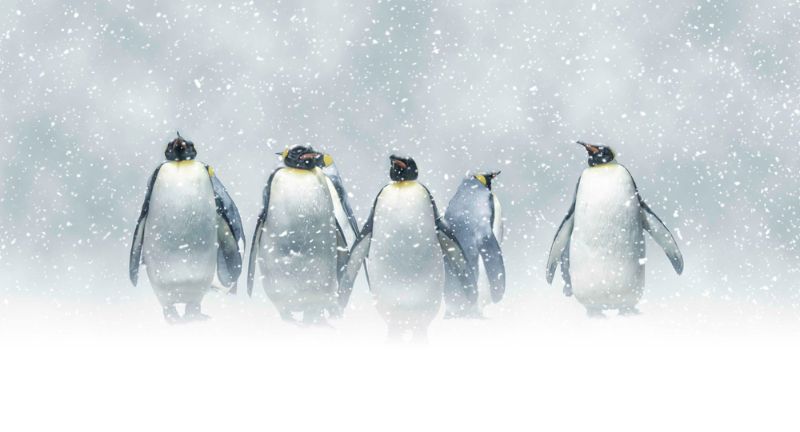
Shutterstock
Emperor penguins are the only species that breed during the Antarctic winter, enduring temperatures as low as -60°C. They huddle together in large groups, sharing body heat to survive the extreme cold. Their unique circulatory system minimizes heat loss, keeping them warm in freezing waters as they hunt for fish. These penguins rely on their thick layer of fat and tightly packed feathers to protect themselves from the elements.
Arctic Fox

Shutterstock
The Arctic fox is a small but hardy predator that thrives in the frigid temperatures of the Arctic tundra. Its dense winter coat provides excellent insulation, allowing it to survive in temperatures as low as -50°C. In winter, the fox’s fur turns white, camouflaging it against the snow and ice, while in summer, it turns brown to blend in with the tundra. Its resourcefulness and ability to scavenge for food during harsh winters make it one of the most resilient animals in the Arctic.
Walrus

Shutterstock
Walruses are large marine mammals that inhabit the icy waters of the Arctic. They have thick blubber, which insulates them from the cold and allows them to spend long periods in freezing water. Their tough skin helps protect them from the sharp ice as they haul themselves onto ice floes. Walruses also rely on their long tusks to break through ice and defend themselves from predators like polar bears.
Snow Leopard

Shutterstock
Snow leopards are elusive big cats that live in the cold, mountainous regions of Central Asia. Their thick, woolly fur provides insulation from the cold, while their wide paws help them navigate snowy terrain. These agile predators are known for their ability to leap great distances, which they use to catch prey such as blue sheep and ibex. Despite their ability to survive in harsh environments, snow leopards are endangered due to habitat loss and poaching.
Musk Ox

Shutterstock
Musk oxen are large, shaggy herbivores that thrive in the Arctic tundra, where temperatures regularly fall below freezing. Their long, thick coats protect them from the cold winds, and their undercoat, known as qiviut, is one of the warmest natural fibers in the world. Musk oxen travel in herds and use their powerful horns to defend themselves from predators like wolves and bears. These animals have survived in the Arctic for thousands of years, enduring harsh winters and scarce food supplies.
Fennec Fox

Shutterstock
The fennec fox is a small, nocturnal animal found in the Sahara Desert, where temperatures can soar to extreme levels during the day. It has large ears that help dissipate heat and keep its body cool. The fennec fox stays underground during the hottest parts of the day, emerging at night to hunt for food. Its pale fur reflects sunlight, and its ability to conserve water helps it survive in one of the world’s hottest environments.
Camel

Shutterstock
Camels are the quintessential desert survivors, known for their ability to endure long periods without water in the scorching heat. Their humps store fat, which they can convert to energy and water when needed. Camels have thick, leathery pads on their feet to walk on hot sand and long eyelashes to protect their eyes from blowing sand. They can also tolerate losing up to 25% of their body weight through dehydration and still survive, making them perfectly adapted to life in desert climates.
Saharan Silver Ant

Shutterstock
The Saharan silver ant is one of the few animals that can withstand the extreme heat of the Sahara Desert, where surface temperatures can reach up to 70°C (158°F). These ants have long legs that keep their bodies elevated above the hot ground and reflective silver hairs that help deflect sunlight. They are the fastest ants in the world, allowing them to scavenge for food quickly before retreating into the safety of their burrows. Their ability to thrive in such extreme heat makes them a marvel of desert survival.
Kangaroo Rat
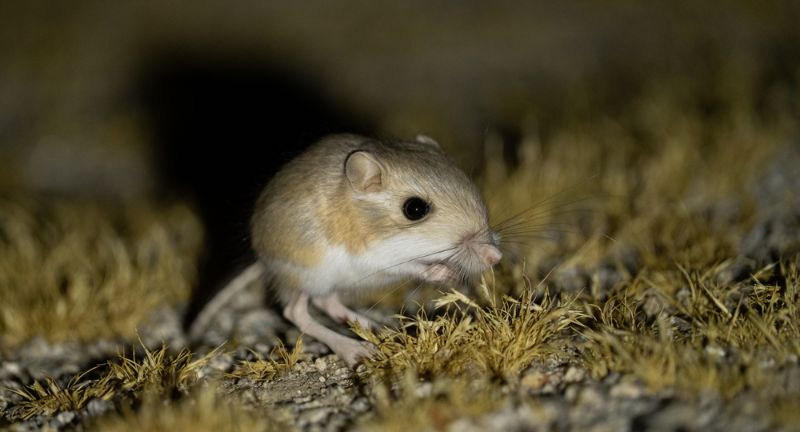
Shutterstock
The kangaroo rat, native to the deserts of North America, is known for its ability to survive without drinking water. These small rodents obtain all the moisture they need from the seeds they consume. They have highly efficient kidneys that allow them to conserve water and produce very concentrated urine. Kangaroo rats are nocturnal, which helps them avoid the extreme heat of the desert during the day.
Thorny Devil
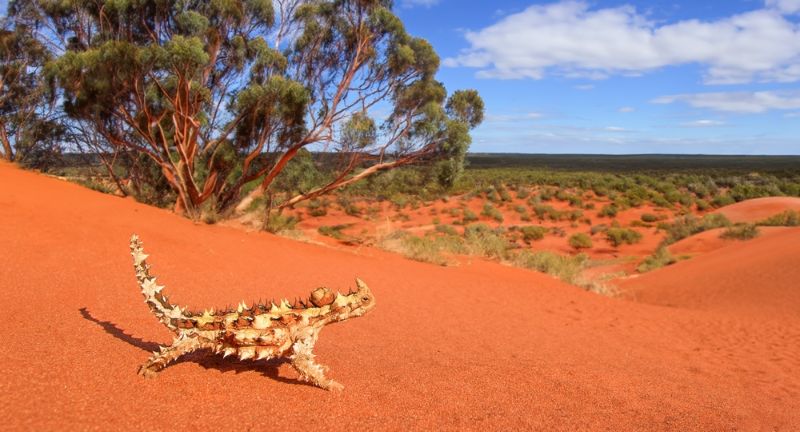
Shutterstock
The thorny devil, found in the deserts of Australia, is well-adapted to surviving the intense heat and dryness. Its spiny body allows it to collect moisture from the air, which then travels down grooves between its spines and into its mouth. This unique method of water absorption helps the thorny devil stay hydrated in a harsh, arid environment. Its camouflage and slow movement also allow it to conserve energy while avoiding predators in the desert heat.
Dromedary Camel
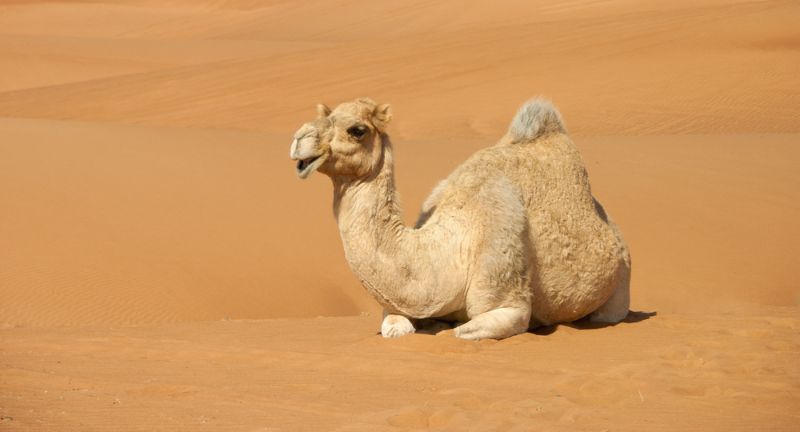
Shutterstock
The dromedary camel is perfectly suited for life in some of the world’s hottest deserts. Its single hump stores fat, which it can convert into energy and water when food and water sources are scarce. The camel’s thick coat insulates it from the heat, and it can raise its body temperature to avoid sweating and conserve water. With the ability to drink over 30 gallons of water in just a few minutes, the dromedary camel can rehydrate quickly after enduring long periods without water.
Yak

Shutterstock
Yaks are native to the high-altitude regions of the Himalayas, where temperatures are cold, and oxygen levels are low. They have thick, woolly coats that keep them warm in the freezing air, and their large lungs and heart help them survive in thin air. Yaks graze on sparse mountain grasses and can live in temperatures as low as -40°C (-40°F). Their thick layer of fat and fur enables them to withstand cold and harsh mountain conditions year-round.
Alpine Ibex

Shutterstock
The Alpine ibex is a wild goat species that inhabits the steep, rocky slopes of the European Alps. It has specialized hooves that allow it to climb and navigate difficult terrain in pursuit of food, even in cold, snow-covered areas. The ibex’s thick winter coat helps it survive in freezing temperatures, while its nimbleness allows it to avoid predators like wolves. These animals live at altitudes as high as 4,600 meters (15,000 feet), where food is scarce, and weather conditions are extreme.
Andean Condor
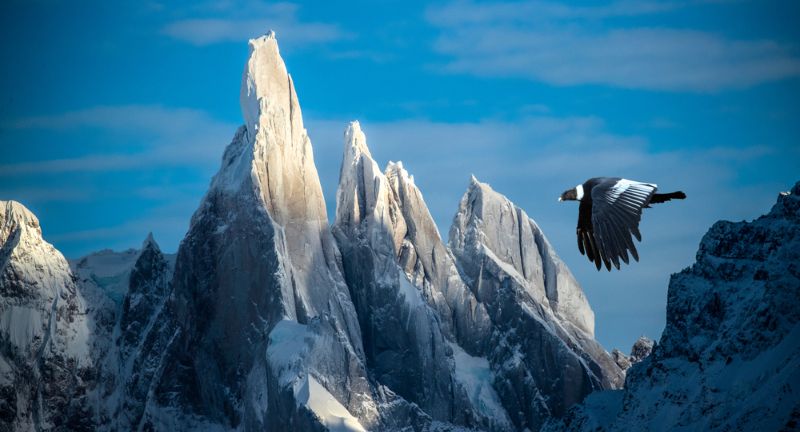
Shutterstock
The Andean condor is one of the largest flying birds in the world, with a wingspan that allows it to soar high above the Andes mountains. It can survive in extreme high-altitude conditions, where temperatures are low and oxygen is scarce. The condor’s powerful wings allow it to glide for hours without flapping, conserving energy in an environment with limited food resources. Despite the harsh conditions of its habitat, the Andean condor is an iconic and resilient scavenger of the mountain ranges.
Llama

Shutterstock
Llamas are domesticated animals that thrive in the high-altitude environments of the Andes Mountains. Their thick wool provides insulation against the cold, and they have adapted to survive in conditions where food and water can be scarce. Llamas are used as pack animals in these mountainous regions, carrying goods over long distances through rugged terrain. Their ability to live at altitudes as high as 4,000 meters (13,000 feet) makes them invaluable to the people of the Andes.
Arctic Char
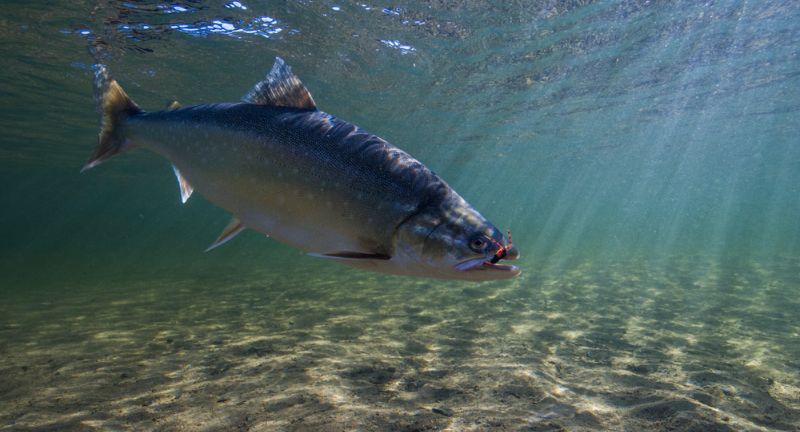
Shutterstock
The Arctic char is a cold-water fish that lives in the Arctic, where it thrives in some of the coldest freshwater lakes and rivers. It has antifreeze proteins in its blood to prevent freezing in subzero temperatures. Arctic char are highly adaptable and can live in both saltwater and freshwater, depending on the season. Their ability to survive and reproduce in such harsh, icy environments makes them a vital part of the Arctic ecosystem.
Gila Monster
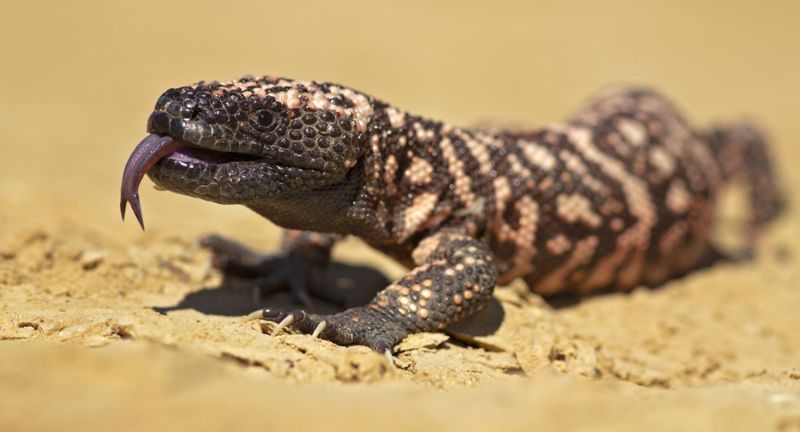
Shutterstock
The Gila monster is one of only a few venomous lizards in the world, and it thrives in the desert regions of the southwestern United States. It spends most of its time in burrows or shaded areas to avoid the extreme desert heat. The Gila monster can go months without eating, relying on stored fat reserves to survive when food is scarce. Its ability to withstand long periods of drought and high temperatures makes it a true survivor of the desert.
Sidewinder Rattlesnake
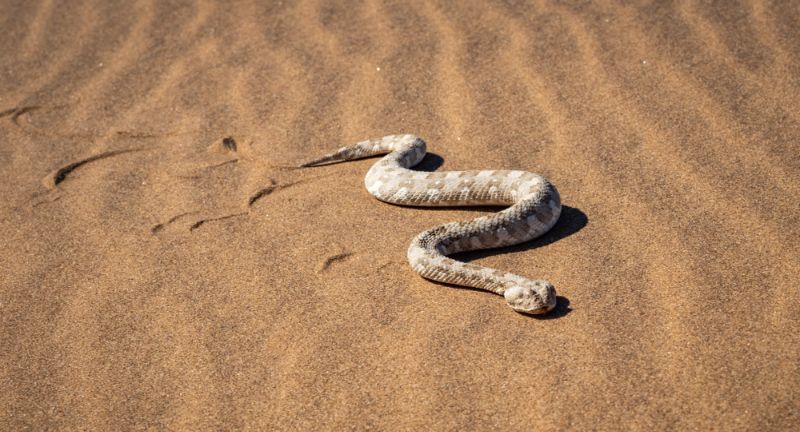
Shutterstock
The sidewinder rattlesnake is adapted to the hot, dry deserts of North America, where it moves across the sand in a unique sideways motion. This movement allows it to minimize contact with the hot ground, helping it avoid overheating. Sidewinders are nocturnal, spending the hottest parts of the day underground and emerging at night to hunt for prey. Their heat-sensing pits help them detect warm-blooded prey even in complete darkness.
Meerkat

Shutterstock
Meerkats are small, social animals that live in the deserts of southern Africa, particularly the Kalahari Desert. They live in large groups and take turns standing guard to watch for predators, while the rest of the group forages for food. Meerkats spend the hottest part of the day in their burrows, which are cooler and protect them from the sun’s intense heat. Their strong social structure and ability to work together help them thrive in the harsh desert environment.
Galápagos Marine Iguana
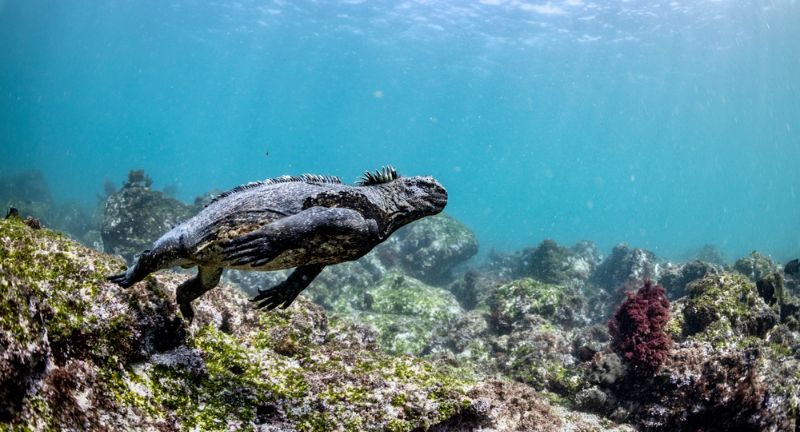
Shutterstock
The Galápagos marine iguana is the only lizard that spends time in the ocean, where it feeds on algae and other marine plants. Found on the volcanic islands of the Galápagos, these iguanas can regulate their body temperature by basking in the sun on hot lava rocks after swimming in cold ocean waters. They have flattened tails that help them swim and sharp claws to grip onto rocky shorelines. Their ability to thrive in both hot and cold environments makes them a unique species among reptiles.
Puffin

Shutterstock
Puffins are hardy seabirds that inhabit the cold North Atlantic, thriving in freezing coastal environments. Their thick, waterproof feathers help them stay warm while swimming and diving for fish in icy waters. Puffins can fly long distances to find food for their chicks, even in the harshest weather. During the breeding season, they nest in burrows on steep cliffs, safe from predators and the worst of the cold winds.
Tardigrades (Water Bears)

Shutterstock
Tardigrades, also known as water bears, are microscopic creatures famous for their ability to survive in extreme environments. They can endure temperatures near absolute zero and well above boiling by entering a cryptobiotic state, essentially suspending all biological functions. Tardigrades can also survive in the vacuum of space and under high levels of radiation. Their extraordinary survival mechanisms make them one of the most resilient organisms on Earth, thriving in conditions where most life would perish.
Beluga Whale

Shutterstock
Beluga whales, often called “sea canaries” for their vocalizations, are found in the icy waters of the Arctic. Their thick layer of blubber provides insulation against the freezing temperatures, and they can navigate through pack ice to reach open water. Belugas are highly social animals, often traveling in pods and using echolocation to hunt for fish in the cold depths. Despite living in such cold environments, they are known for their playful nature and adaptability to changes in their habitat.
Narwhal

Shutterstock
Narwhals, known for their long, spiraled tusks, inhabit the cold Arctic waters, where they spend much of their lives beneath the sea ice. They have a thick layer of blubber to keep them warm and are capable of diving to great depths in search of food, such as fish and squid. Narwhals use their tusks, which are actually elongated teeth, to sense their environment and possibly to stun prey. Their ability to survive in the frigid, ice-covered waters of the Arctic makes them one of the most enigmatic creatures of the region.
Weddell Seal

Shutterstock
The Weddell seal is a true Antarctic resident, capable of living in one of the coldest environments on Earth. These seals are expert divers, often plunging to depths of 600 meters (1,970 feet) to hunt for fish and squid. They have a thick layer of blubber to insulate them from the freezing waters and can hold their breath for over an hour while diving. Weddell seals maintain breathing holes in the ice by using their teeth to scrape away at the ice, allowing them access to both water and air in their icy habitat.
Bactrian Camel

Shutterstock
The Bactrian camel, native to the cold deserts of Central Asia, is built to withstand both scorching heat and freezing cold. It has two humps that store fat, which it can convert to energy and water during times of scarcity. In winter, Bactrian camels grow thick coats to protect themselves from temperatures as low as -40°C (-40°F). Their ability to thrive in extreme temperature fluctuations makes them one of the most versatile survivors in desert climates.
Rock Ptarmigan

Shutterstock
The rock ptarmigan is a bird that inhabits the Arctic and subarctic regions, where it thrives in cold, snowy environments. In winter, its plumage changes from brown to white, providing excellent camouflage in snowy landscapes. This seasonal adaptation also helps to insulate the ptarmigan from the cold. These birds are well-adapted to their environment, able to find food and shelter even in the harshest winter conditions, making them superbly equipped for life in extreme cold.
Conclusion

Shutterstock
The animal kingdom never ceases to amaze with its ability to adapt and thrive in some of the most extreme environments on the planet. From freezing tundras to scorching deserts, these creatures have evolved remarkable survival strategies that allow them to flourish where others would falter. Their resilience is a testament to the incredible diversity of life on Earth and the powerful forces of natural selection. By studying these animals, we gain a deeper appreciation for the complexity and beauty of the ecosystems they inhabit. As we continue to explore and protect these environments, we ensure the survival of these remarkable species for future generations to admire.
More Amazing Animals+
-


Love is in the air: Chihuahuas Peanut and Cashew get…
-


Fascinating Ferrets: 25 Facts About These Mischievous Creatures
-


An Alligator Causing Havoc In Florida Woman’s Yard is Finally…
-


30 Most Interesting Mutualistic Relationships In Nature
-


25 Deadliest Sea Creatures In The World
-


30 Creatures With Astonishingly Loud Calls
-


Slither into Simplicity: How Snakes Bring Peace to Your Home
-


28 Most Colorful Critters From Around The World
-


Leatherback Turtle Hatchlings in Juno Beach, Florida
-


47 Animals That Don’t Need Eyes To See
-


Udderly Adorable: 19 Cute Cow Breeds You’ll Love
-


Cranes Are More Interesting Then You May Think, Here Is…
